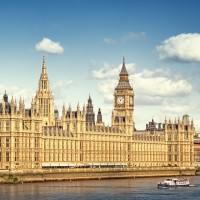
The bill was first introduced on 5 July 2021 and has since gone through many debates and amendments. Among its aims were to provide more guidelines of building safety and provide more protection for leaseholders.
A Department for Levelling Up spokesperson said: “This is an important milestone for the building industry – as we introduce a tough new regime to make homes safe and help rid the sector of bad practice once and for all.
“Leaseholders will for the first time be legally protected from the cost of fixing historical safety defects, as building owners will be prevented from passing these bills onto them.”
The spokesperson added that the largest developers had agreed to “play their part in solving this” but the Levelling Up Secretary of State Michael Gove said it “does not end here” and insisted the government would use new powers against those who fail to act.
Clearer timelines needed from government
The Royal Institute of Chartered Surveyors said that whilst it may not have delivered what everyone had hoped for, it marked a “positive step forward in resolving the building safety crisis, providing greater protections for leaseholders and delivering a new building safety regime.”
It said with the hundreds of clauses in the Bill, there were items that “need clarification through secondary legislation”.
RICS said the industry would need a “clear brief” from the government on the timeline moving forward, such as when the legislation would be ready and when consultations will take place.
“It is critical for RICS and other organisations representing the professions impacted by the Act, to have the opportunity to offer their continued support in finding and shaping the solutions alongside government,” it explained.
RICS also noted that the professional indemnity insurance (PII) market “remains too weak to meet the needs of the industry” and the government needed to bring forward its external wall systems PII scheme to better support professionals.
It added that government intervention was needed to find a PII solution for firms carrying out “wider fire risk and building safety assessments and those carrying out the remediation”.
RICS also called for a timeline on when funding would be available to remediate buildings and when works would get underway.
“RICS supports the government in looking at holistic ways to fund the remediation programme, but upfront funding should be available to leaseholders along with a timeline for remediation, to enable mortgage lending, meaning sellers can sell, and buyers can proceed with confidence,” it said.
The organisation praised the decision to remove the building safety service charge and incorporate it into the existing service charge, but said how this would work and its impact on consumers needed to be outlined.
Major changes have been made but effectiveness ‘remains to be seen’
According to law firm Clyde and Co, major changes to the Bill include scrapping building safety managers or the need to appoint one. There is now an “accountable person” who takes over day-to-day responsibility for higher risk buildings over 18 metres.
Another key amendment was remediation orders and contributions which could force developers, limited liability partnerships and landlords to cover costs.
Accountable persons will also set out the work needed and time period works should be completed in, Clyde and Co noted.
The law firm added that the act includes more ways to “compel construction products manufacturers to pay to put right buildings that have been compromised by their products”.
The act has also introduced new-build home warranties, so developers need to provide a warranty of at least 15 years as standard for relevant properties.
Another amendment that has been enshrined into law is extending the limitation period to 15 years for defective premises claims and 30 years for retrospective claims. The law firm said that this could come into force two months after royal assent.
Amendments around the removal of leaseholder contributions and applying leaseholder protection to buildings of any height did not make their way into the final bill.
The law firm said that the bill was “one of the most scrutinised and hotly anticipated pieces of legislation in recent years” and that its being given royal assent was a “watershed moment”.
It said: “Its purpose was to put in place enhanced regulatory regimes for building safety and construction and these obligations will impact almost all levels of the construction and development industries.
“The real impact of these changes remains to be seen. There is undoubtedly a range of new duties and liabilities for clients to consider, but the staged approach of bringing these obligations into force allows companies time to prepare.”















